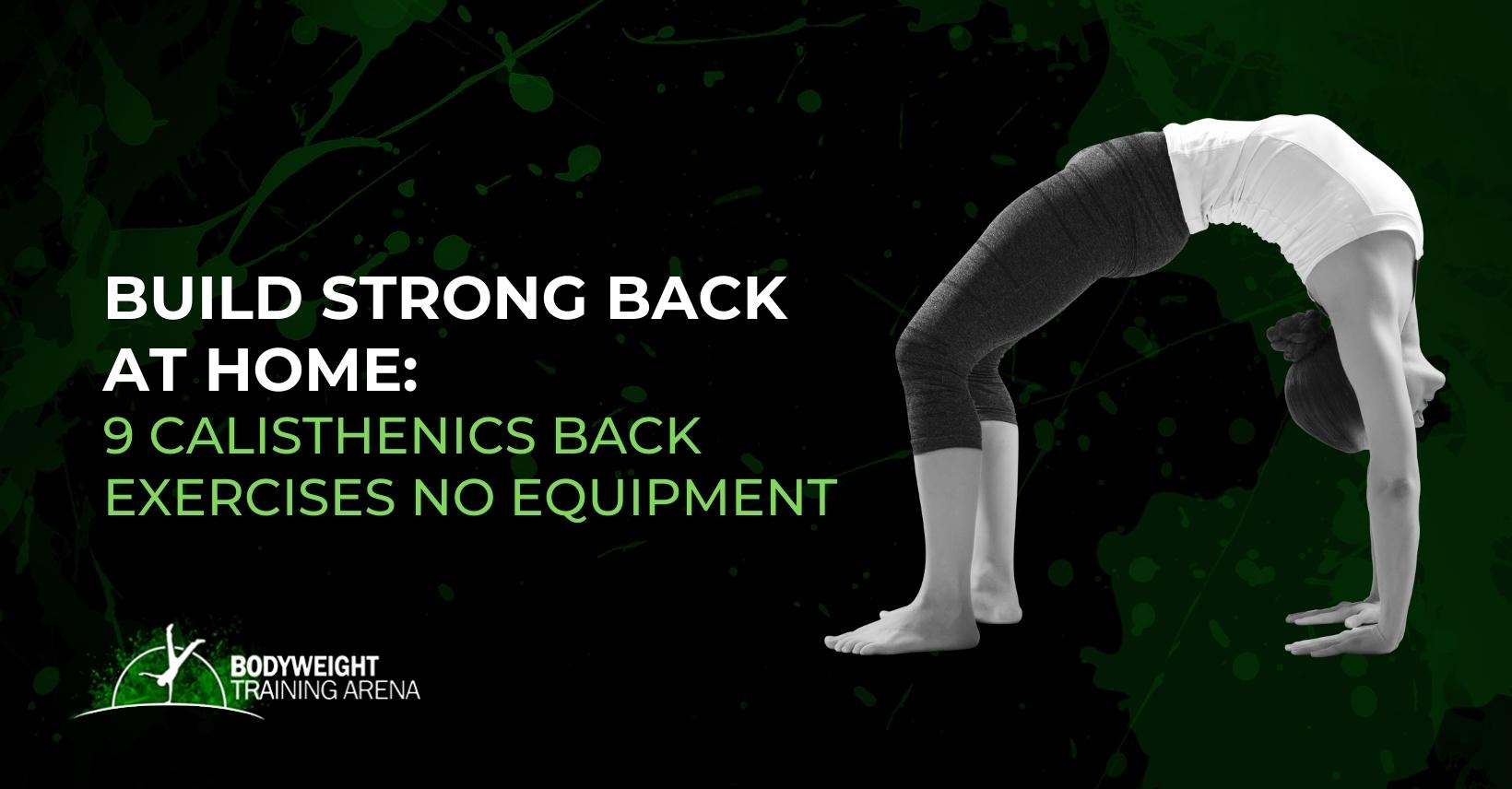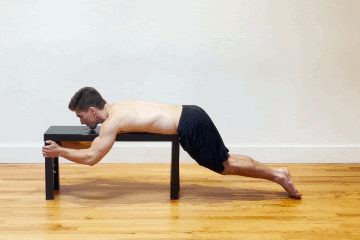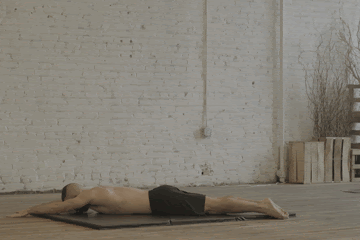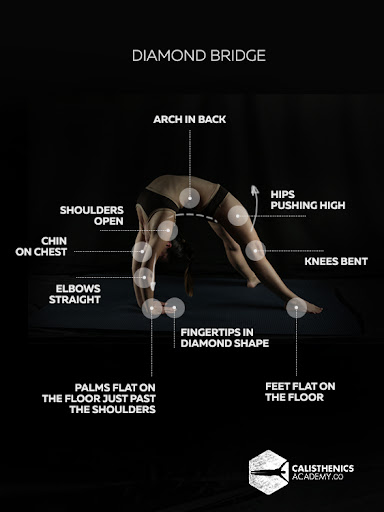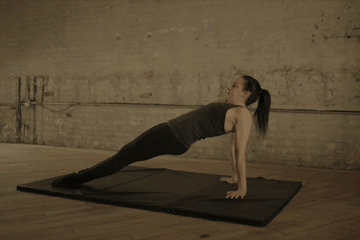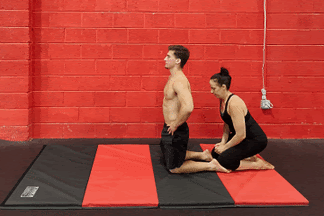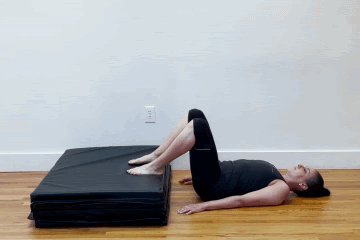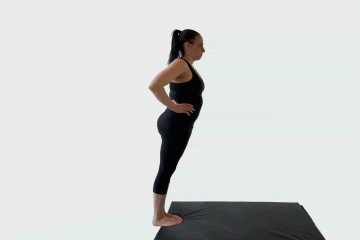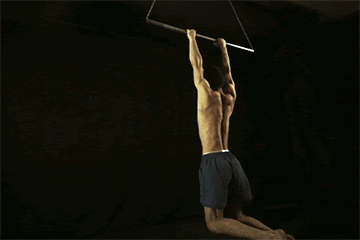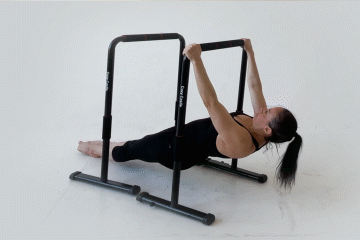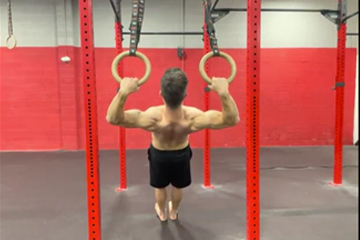There are a lot of calisthenics exercises that you can do without any equipment. But what about calisthenics back exercises? Are there any moves that target the back specifically?
The answer is yes!
In this article, we will discuss some of the best calisthenics back exercises that you can do at home with no equipment required at all. These exercises are simple and effective, and they will help you build a strong back!
We’ll be covering their topics:
- Back anatomy to help you understand the importance & function
- Benefits to back training
- 9 Best calisthenics back exercises without equipment
- Other best calisthenics exercises with equipment
- & Frequently Asked Questions
Let’s get started!
🧐What are the back muscles?
The back muscles are a complex chain that’s commonly neglected in training because they are not the most visible muscle group when looking into a mirror compared to the anterior chain (chest, arms, shoulders, abs). If you’re constantly sitting down for hours in your desk job, your back can develop and/or even amplify weaknesses in the area.
Training your back muscles can highly improve your overall physique, but most importantly, training your back promotes general health and function for a better life.
A strong back will protect your spine, allow you to move better, and make everyday tasks much easier.
Let’s talk about the back anatomy first before moving forward to the best exercises that can hit your back even without using any equipment.
While it looks like one huge muscle, the back is a complex group of muscles with many vital functions. There are three main muscle groups in the back: the trapezius (upper back), the latissimus dorsi (or “lats” – lower/middle back), and the erector spinae (which runs along the entire length of your spine).
Furthermore, we’ll break down the back muscles even further to show you the importance of improving your back muscles.
We’ll first divide the posterior chain into two groups: the upper body and the lower body muscle groups. And in the upper body muscle group, we’re further categorizing them into three sub-groups:
- Superficial
- Intermediate
- Deep
✔️Superficial upper body back
The superficial muscles are the groups that are closest to the skin. Hence, these are commonly the targeted muscle groups during a back workout because they are the most visible when trying to improve the physique.
However, superficial muscles also play an important role in regular functions of the body, such as helping your arms move and keeping your spine straight and healthy.
Lattisimus dorsi
Most commonly known as the lats; this muscle helps you perform many common movements, such as bringing your arms down and to the side of your body (adduction and horizontal abduction), as well as helping with internal rotation of the shoulder.
The lats are large, triangular muscle that spans across the lower back and sides. It’s one of the most important muscles in calisthenics because it’s responsible for a lot of the pulling motions that we do, such as in pull-ups, front levers, and dragon flags.
Rhomboids
The rhomboid is a postural muscle that lies under the trapezius. It works with the traps to maintain good posture and keep the shoulder blades pulled down and back.
The rhomboids are important for all overhead pressing motions, such as in the handstand push-up, pike push-up, military press, and the handstand hold.
Trapezius
The trapezius is a large, triangular muscle that spans the upper back and neck. It’s responsible for many common movements, such as shrugging your shoulders and moving your head from side to side.
The trapezius is an important muscle group in calisthenics because it’s responsible for stabilizing the shoulder girdle. This is especially important in exercises such as handstands, levers, and human flags.
While the trapezius is one muscle, it is commonly divided into three sections: the upper trapezius, middle trapezius, and lower trapezius. Each section has a different function, but they all work together to stabilize the shoulder girdle.
Levator scapulae
The levator scapulae is a long, thin muscle that runs from the base of the skull to the mid-back. It’s responsible for elevating (raising) the shoulder blade and rotating the head to look over your shoulder.
The levator scapulae is an important muscle group in calisthenics because it helps to stabilize the shoulder girdle. While many advanced exercises show importance in scapula position, it’s also vital for fundamental exercises such as push-ups and pull-ups and even in their easier progressions.
✔️Intermediate upper back
Going a bit deeper into the first layer, we’ll uncover the intermediate upper back muscles which involve the erector spinae. While it has many more muscles it, they all play a vital role primarily in the thoracic cage movement and flexion of the spine.
Erector spinae
The erector spinae is a large group of muscles and tendons that runs along the entire length of your spine. It’s responsible for keeping your spine upright and stable, as well as helping you to extend (bend backward) and rotate your trunk.
The erector spinae is an important muscle group in calisthenics because it helps to stabilize the spine. This muscle isn’t only for performance in calisthenics, but also for performance in everyday function and general spine health.
✔️Deep back muscles
The deep back muscles are, as the name suggests, deep within the body that is enclosed by the fascia or the connective tissue that covers, protects and stabilizes muscles. These three muscles below in this sub-group play a major role in body awareness and balance. At the same time, they also stabilize and facilitates movement of the vertebral column.
Semispinalis
The semispinalis is a long, thin muscle that runs from the base of the skull to the mid-back. It’s responsible for extending (bending backward) and rotating your trunk.
Multifidus
The multifidus is a large, triangular muscle that spans the lower back and sides. It also assists in the pulling motion, making it vital for fundamental calisthenics and even advanced calisthenics work.
Rotatores
The rotatores are a group of small muscles that run from the back of the spine to the shoulder blade. They’re responsible for rotating your trunk and stabilizing the spine.
🧐Lower-body back
Included in the posterior chain of muscles are the lower body muscles. Technically, you can also consider the lower back, such as the erector spinae, as part of the lower back but for this point, we’re going to cover the posterior chain in your legs.
Developing a strong set of legs assists not only promotes general health improvements but also helps your upper back to function well.
✔️Glutes
The glute muscles are one of the most popular muscle groups to train since developing them helps build a well-rounded butt.
But the glutes aren’t just for show, they’re actually a very important muscle group that stabilizes the hip and pelvis.
✔️Hamstrings
The hamstrings are a group of three muscles that run along the back of your thigh. They’re responsible for bending your knee and extending your hip. The hamstrings also help to stabilize the pelvis and control the movement of the leg.
✔️Calves
In the lower part of the legs, the calves are the large, round muscle at the back of your lower leg. The primary function of the calf is to point (extend) your foot and help you to rise up on your toes.
The calves are an important muscle group in calisthenics because they help to stabilize the ankle and control the movement of the foot. They also assist in the push-off motion, making them vital for exercises such as jump squats and box jumps.
🧐Why do you need to train your back muscles?
⚡️Functions of the back muscles
The back muscles play a vital role in stabilizing the spine, as well as helping you to extend (bend backward) and rotate your trunk. The erector spinae is an important muscle group in calisthenics because it helps to stabilize the spine. This muscle isn’t only for performance in calisthenics, but also for performance in everyday function and general spine health.
The deep back muscles are responsible for body awareness and balance, as well as stabilizing and facilitating the movement of the vertebral column. The semispinalis, multifidus, and rotatores are all important muscles in the deep back that you should focus on developing
🏆Benefits of back training
As you can see, the back performs a multitude of movement patterns that are crucial for performance and daily function.
In addition to the benefits of improved performance and function, training your back muscles can also help to:
- 💯Improve posture
- 💯Reduce the risk of injuries through strengthing exercises
- 💯Decrease back pain
- 💯Increase core strength
- 💯Enhance balance and coordination
- 💯Better physique
🧐Can calisthenics train your back even without equipment?
Calisthenics is a form of resistance training. This means that its main purpose is to build strength and muscle, even without the use of weights or other equipment.
There are a variety of calisthenics exercises that you can do to target the different back muscles. These exercises range from beginner to advanced, so there’s something for everyone.
Here are also other advantages why calisthenics is an excellent option for developing a strong back:
- Convenient and accessible training anywhere
- Holistic development not only the back muscles
- Improves mobility, endurance, body awareness, body control & other attributes
- Treats injuries and pain – this depends on your specific condition but the pain caused by dysfunction, weakness, & imbalances are often resolved with calisthenics exercises
Read more about calisthenics advantages here: 📍Is Calisthenics Really a Better Way to Train?
🔥9 Best calisthenics back equipment No-equipment
We’re going to list our favorite and most effective back exercises that don’t require any equipment at all! There will also be a sample workout so you can get started with your back training even in the comforts of your home.
👊Upper body posterior chain
🎯Prone arm circles
Prone arm circles are more of a mobility movement but hit many back muscles including the rear deltoids and rotator cuffs which are also technically part of your back as well. It also hits your rhomboid, traps, and lats if the exercise is done correctly.
The prone arm circles improve shoulder mobility while also strengthening and improving the general health of your shoulders and back.
How to perform:
- Begin by lying on the floor with your stomach facing the ground.
- Place your arms overhead.
- Lift your arms slightly off the floor.
- Arch your upper back to lift your upper torso slightly off the floor.
- Turn your thumbs upward with your arms externally rotated.
- Move your arms while keeping them straight into your backside while rotating your arms internally.
- Reverse the motion.
- Repeat for reps.
Coaching pointers:
- Maintain straight arms when overhead
- You can reverse the body position into a posterior pelvic tilt to emphasize the shoulder
- Move through your range of motion
- Slow and controlled movement
🎯Reverse hyperextensions
If you’re working on your planche, then you’ve probably encountered reverse hyperextension. This exercise comes with many many names, but the form and technique are the same. Reverse hyperextension targets your lower back but also includes your glutes and hamstrings.
The strength gains from this exercise directly translate to the lower body portion of the planche since it mimics the same position. You can use this to improve your planche, or just to simply improve your posterior chain.
With this exercise, you have to get an elevated surface such as a bench or a table. Nothing fancy, but it should be able to hold your body weight.
How to perform:
- Lie down with the stomach facing down on an elevated surface.
- Move so that your hips are off the edge of the elevated surface.
- Let your hips and legs down on the floor. This is the starting position.
- Slowly extend your hips so that your lower body is aligned with your upper torso.
- Pause at the top position.
- Lower down with control.
- Repeat for reps.
Coaching pointers:
- Hold on to the elevated surface for added tension.
- Avoid arching your lower back.
- Engage your glutes and hamstrings as you perform the movement.
- Adjust your body position to suit your skill level with the easiest progression to hardest: Tuck > Bent legs straddle > Straddle > Half-lay > Full legs together
🎯Archups
The arch-up is a calisthenics fundamental calisthenics exercise for developing a strong core but also targets the full posterior chain because of the arched body position. This exercise is popular among calisthenics athletes and gymnasts because of the good value it provides even without using any equipment.
How to perform:
- Lie on the floor with your stomach down.
- Place your arms overhead.
- Lift your upper torso and legs upward.
- Pause at the top position.
- Lower down with control.
- Repeat for reps.
Coaching pointers:
- Full body tension
- Legs together
- Move through your range of motion
- Adjust the difficulty from tuck body position.
🎯Back Bridge
This flexibility move isn’t only good for developing a range of motion but also improves strength and control; hence mobility. For many, the back bridge will surely feel like an impossible move to learn. However, if you follow the proper back bridge progression along with the supplementary work for it, you can definitely build enough strength and mobility for the exercise no matter where you are in your fitness journey at the moment.
The back bridge primarily targets your traps and erector spinae. In addition, your posterior shoulders, triceps, glutes, and hamstrings work together to stabilize you into position. It’s a complex move that involves spine extension, hip extension, and shoulder extension. Mastering this exercise not only gives you a cool party trick, but gains translate to better health and function of your posterior chain.
How to perform:
- Begin by lying with your back on the ground.
- Place your hands beside your head with your fingers facing your feet.
- Bend your knees.
- Push through your feet and hands into full hip, shoulder, and spine extension.
- Hold the position for a specified time.
Coaching pointers:
- There are many entrances to go with this move. Pushing up into the back bridge is just one option.
- Progress gradually and be sure to choose a progression that suits your current skill level
- Break down the skill and your weaknesses to improve faster
- If you can get into full extension, move into an easier regression.
🎯Rear delt press
For the commonly neglected back muscles, the rear delt press is an excellent option to add to your training. Aside from the obvious rear deltoids, this exercise also emphasizes your rhomboid, middle trapezius, and your erector spinae.
Don’t get fooled by the simplicity of the exercise. The rear delt press is difficult to execute especially since these muscles are commonly neglected. If you can’t raise your body off the ground, perform the movement by driving your elbows to the ground to engage the correct muscles. As you grow stronger, progress until your can lift your body.
How to perform:
- Lie on the floor with your back on the ground.
- Bend your knees.
- Place your elbows sideward so that your elbows are slightly below your shoulders.
- Drive your elbows to the floor to lift your body from the ground using your back muscles.
- Brief pause at the top position.
- Lower down and repeat for reps.
Coaching pointers:
- If you cannot lift your body, continue driving down to the floor and actively imagine your back muscles working
- Scapula depressed and retracted
- Posterior pelvic tilit
🎯Back plank
Also commonly known as the table exercise, the back plank works similar to the regular plank but with much more emphasis on the posterior chain. It actually hits the whole posterior chain; both the upper body and lower body. On top of that, the exercise also stretches your shoulders, biceps, and chest muscles.
Its main emphasis is on your rhomboid, middle traps, erector spinae, glutes, and hamstrings. The goal of the exercise is to fully extend your spine and legs in a straight position while maintaining a strong stabilization from your shoulders.
How to perform:
- While sitting down on the floor, plant your hands just behind you.
- Extend your lower body and plant the back of your heels on the ground.
- Push your shoulders down to the ground.
- Push your hips upward and straighten your body.
- Hold the position for a specified time.
Coaching pointers:
- Scapula shoulder depression and retraction
- Spine extension into a neutral position
- Full body tension
- This exercise does require an adequate amount of shoulder mobility
- Bend your legs if you can’t straighten them yet
👊Lower body posterior chain
Let’s move to the lower half of the posterior chain: your legs. Primarily, we’re going to target the hamstrings, glutes, and calves. We’re going to be brief for this part of the article. However, if you’re interested in more leg exercises, chest out the best ones in the articles below:
📍Best Glute Exercises & Workout
📍17 Best Bodyweight Hamstring Exercises
📍4 Biggest Secrets to Bigger Calves with Bodyweight
🎯Nordic curls
The nordic curl is undeniably one of the best exercises that target the glutes and hamstrings. It is scalable to the point that you can use this exercise and its progression for a lifetime. This bodyweight exercise is highly effective in emphasizing the targeted muscles.
While in most tutorials, you will see individuals using equipment to anchor their legs to the ground, you can actually get creative and find your own means that work for you. Remember that calisthenics is very accessible and convenient.
How to perform:
- Anchor your feet to the ground.
- Position in a high kneel with hips extended.
- Place your hands just by your chest.
- Lower your body down to the ground until your face nearly touches it by hinging at your knees.
- Reverse the motion and repeat for reps.
Coaching pointers:
- Keep an upright torso
- Maintain hip extension
- Slow and controlled movement going down
- If you’re having a hard time with the exercise, regress by hinging at the hips
- You can also use band or wall assistance when progressing
- Stay comfortable by placing a soft pad under your knees
- Feet can either be pointed or flexed depending on your preference
🎯Glute bridge
When starting out, you can also rely on the glute bridge first instead of the nordic curls. This exercise hits the hamstrings and glutes. Many people also rely on this exercise for lower back activation. While there is some amount of work done by the lower back for stabilization, the lower back is better off trained through other exercises like the ones mentioned above.
Still, the glute bridge is a great exercise for building up strength, muscle, and mobility for your posterior.
How to perform:
- Lie flat on your back with feet flat on the ground and shoulder-width apart.
- Drive your heels into the ground, and lift your torso and upper legs into the air, extending your hips until your thighs and torso are in line with each other
- Squeeze your glutes at the top of the bridge.
- Slowly lower your body back to the starting position.
- Repeat for reps.
Coaching pointers:
- Keep your whole foot on the ground and drive through your heels
- Lift your hips as high as possible while keeping your shoulders and upper back on the ground
- Squeeze your glutes at the top of the bridge for maximum muscle contraction
- Avoid arching your lower back
- Elevate or extend your feet forward to increase intensity. You can also perform the exercise in a unilateral manner.
🎯Calf raises
Nothing beats calf raises for isolating your calves and forcing them to grow. While this exercise is commonly performed with weight, you can actually get a great calf pump by just using your body weight. Calf raises are one of the most versatile exercises as you can perform them in many different ways to target your calves from different angles.
How to perform:
- Position yourself with your feet shoulder-width apart and flat on the ground.
- Lift your heels so you’re standing on your toes.
- Lower yourself back down to the starting position.
- Repeat for reps.
Coaching pointers:
- Avoid rocking from side to side as you raise and lower your heels
- Pause at the top position, slow negatives
- You can also perform it on an edge of a surface so you can get full flexion of your feet which stretches the calves even more
- Perform with one leg at a time if its too easy
✨Additional: Best back exercises MUST-HAVES (equipment needed)
The exercises above are the best ones to have if you don’t have equipment. HOWEVER, if you can manage to get access to some items such as a pull-up bar or gymnastics rings, then these back exercises must be included in your back routine.
Again, these exercises are not necessarily mandatory, but they are simply the best exercises that offer high value when implemented in your routine. That’s why we have to mention them in this article.
💥Pull-ups
If you have any access to a pull-up bar, gymnastics rings, or any alternatives, then nothing beats regular pull-ups to develop a strong back. This exercise is a must for any calisthenics athlete or gymnast. It primarily works your latissimus dorsi, teres major, and trapezius.
This calisthenics fundamental sets a strong foundation of strength for the posterior chain. There are also plenty of progressions to work with if you can’t do a full pull-up yet.
For beginners, the often progression goes along these methods:
- ✅ Band/leg assisted
- ✅ Inverted rows
- ✅ Negatives
For advanced athletes who have mastered the pull-up, you can choose among the following ways to progress:
- Weighted pull-up
- 📍One-arm pull-up progression
- Archer pull-up
- Mantle pull-up
What grip to choose?
If you’re wondering if you should either do the pull-up or chin-up to build your back, then here’s your answer.
Choose what works for you!
While it’s true that pull-ups have more lat activation compared to chin-ups and neutral grip, according to research that analyzed the muscle activation on pull-ups with different grips and widths, you can opt for any of the three for back activation.
In terms of width, opting for a shoulder-width stance or slightly wider is optimal for back activation.
As long as you train them consistently, and rotate your grips per training cycle, you will inevitably grow a strong back with pull-ups and/or chin-ups.
💥Inverted rows
Inverted rows are the perfect bodyweight exercise to start your pull-up journey. Compared to the vertical pull of the pull-ups. The inverted rows are performed in a horizontal manner making it much easier compared to pull-ups.
HOWEVER, it doesn’t mean it’s always easy. Even if you’re training with pull-ups, you can still always include inverted rows in your workout to add training volume and stimulation of your back muscles.
Inverted rows can easily be scaled for your level especially if you have access to gymnastics rings which can easily be adjusted.
Don’t skip on rings even if you can already do pull-ups!
💥Face pulls
Face pulls are a great exercise to target your rear delts. They also work your traps and upper back muscles. This movement is often neglected by people who primarily focus on the chest and arms, but having strong rear delts is important for posture and shoulder health. Face pulls can be performed with a band or cable or gymnastics rings which we highly recommend.
🔥Calisthenics Back Workout (No Equipment)
Key pointers:
- Perform 2x per week
- Do your warm-up – 📍he Ultimate Guide to Calisthenics Warm-up
- Don’t forget to train the rest of your body in a separate session!
- Adjust the difficulty of each exercise that suits your skill level
Back plank – 3 sets of 30 – 45 secs: 2 min rest
Bridge – 3 sets of 30 – 45 secs: 2 min rest
Rear delt press – 3 sets of 8 – 12 reps: 90-sec rest
Arch ups – 3 sets of 6 – 12 reps: 90-sec rest
Reverse hyperextensions – 3 sets of 6 – 12 reps: 90-sec rest
Prone arm circles – 3 sets of 6 – 12 reps: 90-sec rest
🧐Frequently Asked Questions
🔎How can I build my upper back without equipment?
You can definitely build a bigger and stronger back at home using the recommended exercises above. However, for an efficient way of developing your back, we highly recommend getting at least a pull-up bar and/or gymnastics rings to facilitate optimal back growth.
Building muscle with calisthenics is simple just like when building muscle with weights. Follow these general muscle-building protocols:
- Train progressively – 📍Progressive Calisthenics
- Meet your macronutrient requirement through whole foods – 📍Bodybuilding Diet Guide
- & rest well! – 📍Ultimate Guide to Workout Recovery
Read more here: 📍How to Build Muscle with Bodyweight Only
🔎Do push-ups work your back?
Push-ups are a great way to work your “mirror” muscles. They target your pecs, delts, and triceps, as well as your core muscles. If you want to focus on your back muscles specifically, opt for the exercises above.
🔎What if you have back pain?
If you have existing back pain, then the first course of action is to consult your physiotherapist or healthcare specialist personally. Online consultation isn’t always good because it can’t be as accurate as a personal visit to your specialist.
If you can still move your body with tolerable pain, we highly recommend MOVING your back muscles and finding that weakness so you can fix it and alleviate the pain.
Pain from stiffness, inactivity, and overuse can often be treated with the right calisthenics exercises. However, it’s still best to have a professional check first!
🔎What if I can’t do these exercises?
Some of these exercises are challenging and require a good level of strength and mobility from your posterior chain. If the exercises are too difficult, then we highly recommend that work with the calisthenics fundamentals first with their basic progressions.
📍Beginner Calisthenics Workout
📌Takeaway
Training your back muscles is important for both aesthetics and function. There are a lot of calisthenics back exercises that you can do at home with no equipment required. These exercises are simple and effective, and they will help you build a strong back! Remember to focus on quality over quantity, and listen to your body if you feel any pain.
With consistency and dedication, you’ll see results in no time!
Did you find this article helpful? Share your thoughts with us in the comments below!
And be sure to check out our PERSONALIZED and ADAPTIVE training program that gives the BEST results 📍compared to cookiecutter or one-size-fits-all beginner/intermediate/advanced programs.
Get a feel for how to train with the most advanced calisthenics training system in the world.

